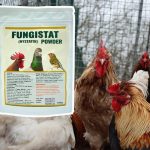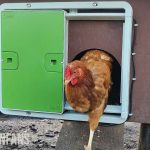Do Chickens Yawn? (10 reasons + health risks)


Chickens can yawn, but it’s nothing like a human yawn. They stretch their neck and open their beak. It looks very similar to yawning, but it doesn’t mean they are ready to nap or go to bed.
There are multiple reasons why chickens yawn, and we’ll address the most common causes.
Why does a chicken yawn?
Chickens yawn to cool down, rearrange their crop, gasp for air, or free up their throat. Yawning is primarily innocent, but it can be a sign of multiple underlying diseases that target a chicken’s respiratory tract, food pipe, crop, or mouth.
We will go over various reasons for a chicken to yawn. Some are harmless, and you shouldn’t immediately worry if you see your chicken yawning. However, it’s best to keep an eye on a frequently yawning chicken since it might be a clinical sign, especially when the yawning starts to look more like gasping.
Here are ten reasons why a chicken yawns:
- Rearranging food in the crop
- Cooling down during hot weather
- Something stuck in the throat
- Sign of gapeworm in chickens
- Sour Crop
- Canker
- Ear Infection
- Fowl Pox
- Fowl Cholera
- Squamous Cell Carcinoma
Let’s go over them one by one.
Rearranging food in the crop
When a chicken eats, the digested food does not go straight into the stomach but gets stored in the crop before going further into the digestive tract. The crop is located slightly to the right side of the breastbone, at the bottom of its neck.
As chickens tend to eat very fast, the food gets stored in this special pocket so they can’t overeat. When their crop is full, chickens stop eating until the food digests and the crop shrinks.

Yawning can be a sign of your chickens adjusting the crop. It’s nothing to worry about. Sometimes their crop annoys them, and they open their beaks and stretch out their necks to readjust the crop comfortably.
Cooling Down during Hot Weather
Another innocent reason your chicken looks like it’s yawning is heat waves or hot temperatures. Chickens have no sweat glands, so they rely on their respiratory system to cool down. They don’t actually yawn; chickens pant to cool themselves.
By opening their beak and breathing heavily, they try to lower their body temperature. Panting can look similar to yawning, and as long as your chickens aren’t panting excessively, there is nothing to worry about. There are multiple ways to cool down your chickens, but providing cool drinking water and shade is the minimal thing to do.
Something stuck in their Throat
Chickens can have food stuck in their throat that will start to irritate and makes them gasp for air. They start to yawn and frequently open and close their beak. When you see food stuck in your chicken’s throat, try to make the food slide towards the crop by drizzling water or olive oil into your hen’s mouth. If the food starts to loosen, it’ll slide further into the digestive system, solving the problem. You can help the food pass the throat by gently massaging your chicken’s neck.
Don’t poke into your chicken’s beak with tweezers. Consult a vet if the food does not slide through by itself, even if your chicken seems to breathe normally. This could be a sign of a more severe issue than stuck food, like a throat tumor or throat infection.
Sign of gapeworm in chickens
A more severe health condition why chickens can yawn is signs of gapeworms in their throat. Gapeworms are thin, bright red worms with a remarkable Y-shaped appearance. They cause parasitic respiratory infections by living in birds’ trachea (windpipe). Chickens accidentally get infected by ingesting bird feces containing gapeworm larvae or eating infected snails or earthworms.
Once the chicken ingests the worms, they attach themselves inside the windpipe, where they’ll reproduce, lay eggs and feed on blood. This irritates the chicken’s throat and makes them gasp and yawn.
Gapeworms in chickens should be addressed immediately. The more worms attach themselves inside the windpipe, the harder it becomes for the chicken to breathe. A severely infected chicken can die of gapeworms when the airflow gets completely blocked.
Sour Crop
Sour crop or candidiasis is an infection of the chicken’s crop. When a chicken swallows, the food stays in the crop for a while, where the digestion starts. This allows chickens to buffer their food intake.
In the case of candidiasis, there is an immense growth of Candida yeasts that ultimately leads to an infection. The yeast is a typical inhabitant of the chicken’s microflora but can suddenly grow excessively when triggered.
Some factors that can provoke sour crops include:
- improper diet
- prolonged use of medication such as antibiotics
- stress due to lack of space or aggressive roosters
- an underlying condition or illness
When your chicken is suffering from a candida infection, you will notice:
- reduced appetite or even entirely stopping to eat
- food returning to their mouth
- white plaques in their mouth
- a foul smell coming from their mouth
- yawning and neck stretching
If the sour crop comes together with an impacted crop, they will shake their heads and make gurgling sounds.
Canker
Canker or trichomonosis is a common disease that infects birds worldwide. It’s caused by a parasite that enters your backyard chicken flock via wild pigeons and doves.
The disease causes yellowish sores in their mouth. These sores grow over time, making it difficult for the chicken to eat and swallow.
Sometimes the disease spreads from the mouth to the windpipe. This causes difficulty breathing, and the chickens will gasp for air and yawn to get more oxygen.
Canker can be treated with antibiotics effective against the protozoa parasite.
Ear Infection
It’s not always immediately apparent, but chickens do have ears. They are hidden behind some stiff feathers on their heads. Apart from hearing, their ears help them to keep their balance.
Multiple bacteria and fungi can infect a chicken’s inner, middle, and outer ears. E. Coli and Pasteurella bacteria are among the most common causes.
Chickens that have to cope with an ear infection will:
- tilt and shake their head
- get out of balance
- put their head in strange positions
- scratch and rub their head
- yawn excessively
The outer ear sits between the feathers and leads to the eardrum and the inner ear. The inner ear is an air-filled acoustic channel connected with open-air cavities leading to the mouth and nares. Just like we have a Eustachian tube that connects our ears with the back of our nose, a chicken’s middle ear has a structure to regulate pressure.
By yawning and stretching their necks, chickens can try to release the middle ear pressure. Although the infection affects the ears, excessive yawning is a common sign of ear infection in chickens.
Fowl Pox
Fowl pox is a severe contagious infection in poultry that can be fatal for chickens. It’s famous for the black spots that you can see on an infected chicken’s comb. The dry form of fowl pox is responsible for these painful blisters on their skin.
However, fowl pox also has a wet form, the more deadly variant. Wet fowl pox targets the throat en respiratory tracts of a chicken. It grows yellow plaques in the throat, preventing chickens from eating, drinking, and breathing properly. Chickens are often coughing, sneezing, and yawning.
Fowl Cholera
Fowl cholera is a widespread bacterial disease that can be fatal and comes with some horrible symptoms. The infection causes blood poisoning and chronic infections. It’s usually seen with roosters or older chickens.

The disease can enter very suddenly in the acute form or develop slowly in the chronic form. In both forms, Fowl Cholera can cause difficulty breathing and can cause swelling in the ears and sinuses. Birds frequently open and close their beaks which looks a lot like yawning.
Apart from yawning, there are several other severe symptoms in the acute form like:
- purple discoloration of the combs and wattles
- fever and ruffled feathers
- watery green or yellow diarrhea
Chronic Fowl Cholera infections affect the respiratory tract and tonsils, making the chickens yawn. But apart from the yawning and breathing problems, there are other symptoms like:
- swollen wattles and face, sometimes eyes
- swollen feet and legs
- swollen ears
Treatment is based on antibiotics, but infected birds will carry the bacteria for life.
Squamous Cell Carcinoma
Unfortunately, we have to end this list with a tumor. Squamous cell carcinoma is a cancerous tumor that grows in the food pipe of a chicken. It’s a common type of cancer that affects poultry and usually targets the mouth, food pipe, crop, or legs.
When the mouth and food pipe area are affected, chickens will have difficulty swallowing and can start yawning. Apart from yawning, you might see:
- tumor growth in the mouth
- strange neck positions and neck movements
- food coming back from the crop
That said, there is plenty of other reasons for chickens to yawn. So the chances are slim that it’s cancer.
Summary
There are several reasons why chickens can yawn, but it never means they are getting tired. Most of the time, the yawning is innocent. The birds might have something stuck in their throat. Or they are trying to get some fresh air to cool down.
But in some cases, it’s a clinical sign of an underlying disease. If you see your chicken yawning, keep an eye on the bird to see if it shows any other signs. Various conditions can affect a chicken’s windpipe, food pipe, and crop, which will cause a chicken to yawn. Most of them can be treated.
If the situation worsens or you are in doubt, contact a veterinarian.
If you want to read more about chicken health problems, symptoms, and diseases, check out our ‘Health Page‘. You’ll find a ‘Symptom Checker‘, a complete list of ‘Chicken Behavior‘, and an overlook of the most common ‘Chicken Diseases‘. Or go to ‘The Classroom‘ and find a comprehensive list of all Chicken Fans articles.

Dr. M. Tanveer is a licensed veterinarian with several years of experience with chickens. He got his degree from the Faculty of Veterinary and Animal Sciences of the Islamia University of Bahawalpur and has firsthand experience as a veterinarian on broiler breeder farms.





















